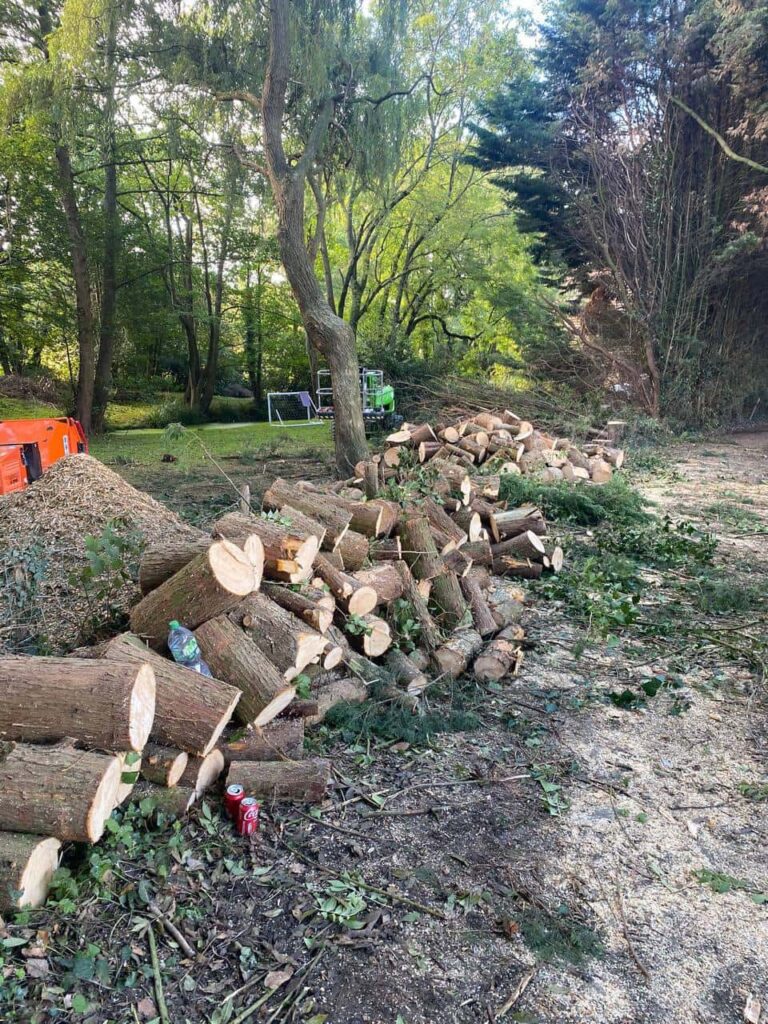Introduction: Trees are a vital part of our environment and cherished features of our landscapes. Preventive measures are essential to ensure these magnificent beings’ longevity and safety. Dead wood removal is one such measure that plays a crucial role in saving trees from potential disasters. In this blog post, presented by Wickham Market Tree Surgeons, we’ll explore the significance of dead wood removal as a preventive measure and how it can safeguard your trees and surroundings.
Understanding Dead Wood
Before delving into the preventive aspect, let’s grasp what dead wood is and why it can harm trees.
Dead wood refers to branches or parts of a tree that have ceased functioning and are no longer living. This can occur due to various factors, including disease, pest infestations, physical damage, or natural ageing. Brittle, discoloured, or leafless branches characterise dead wood.
The Hidden Dangers of Dead Wood
Dead wood might seem harmless, but it poses several hidden dangers:
Safety Hazards: Dead branches are prone to falling, especially during storms or windy conditions. These falling branches can cause injuries, damage property, or block roadways.
Disease and Pest Attraction: Dead wood can become a breeding ground for pests and diseases. These issues can quickly spread to healthy parts of the tree or neighbouring trees, creating a domino effect of decline.
Reduced Aesthetic Appeal: Dead wood can make a tree look unattractive, detracting from its natural beauty and diminishing its value in your landscape.
Dead Wood Removal as a Preventive Measure
Now, let’s explore how dead wood removal serves as a preventive measure to save trees from disaster:
Enhanced Safety: Dead wood removal eliminates the risk of falling branches, making your property and surroundings safer for residents and visitors. Preventing accidents and damage is a key benefit of proactive tree care.
Disease and Pest Control: Removing dead wood eliminates the habitat that attracts pests and diseases. This protects the affected tree and prevents the spread of issues to nearby trees.
Improved Aesthetics: Dead wood removal rejuvenates the tree’s appearance, enhancing its aesthetic appeal and revitalising your landscape.
Promotes Longevity: Removing dead wood reduces stress on the tree and allows it to allocate resources to healthy growth, potentially extending its lifespan.
Preserve Environmental Balance: Healthy trees contribute to a balanced ecosystem by providing oxygen, absorbing carbon dioxide, and offering habitat for wildlife. Dead wood removal helps maintain this vital balance.
Conclusion: Dead wood removal is more than just a routine tree maintenance task; it’s a preventive measure that safeguards trees from potential disasters. By addressing safety hazards, controlling pests and diseases, improving aesthetics, promoting longevity, and preserving the environmental balance, dead wood removal ensures that your trees thrive for years to come. If trees on your property need dead wood removal or other preventive tree care services, contact Wickham Market Tree Surgeons. Our experienced arborists are here to help protect your trees and your environment from unnecessary risks and disasters.
Call us on: 01728 448 695
Click here to find out more about Wickham Market Tree Surgeons
Click here to complete our contact form and see how we can help with your tree’s needs.

